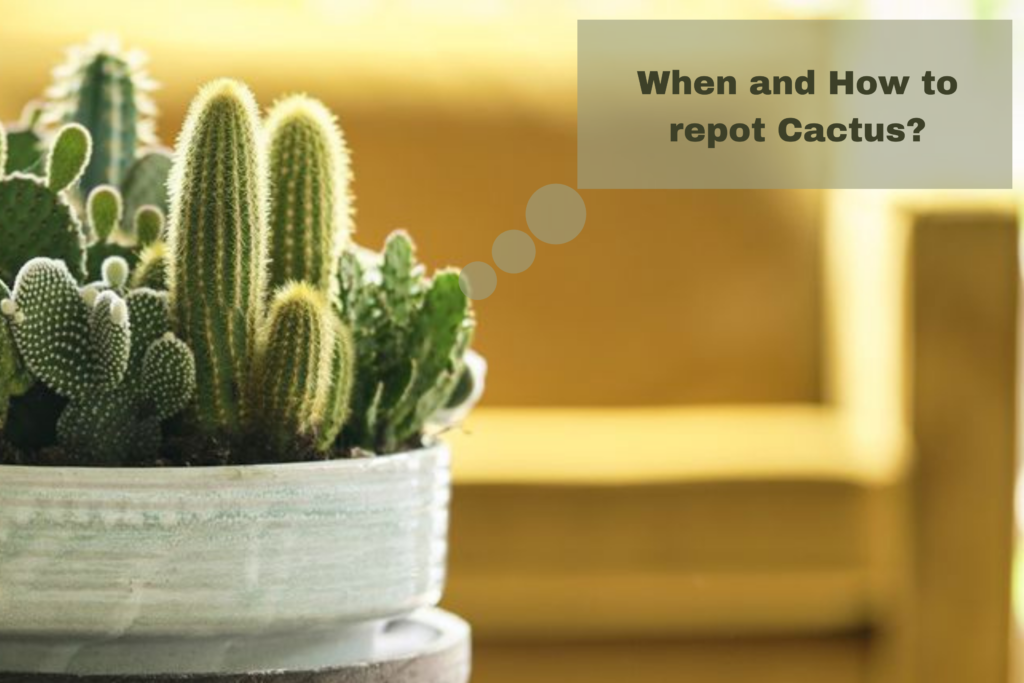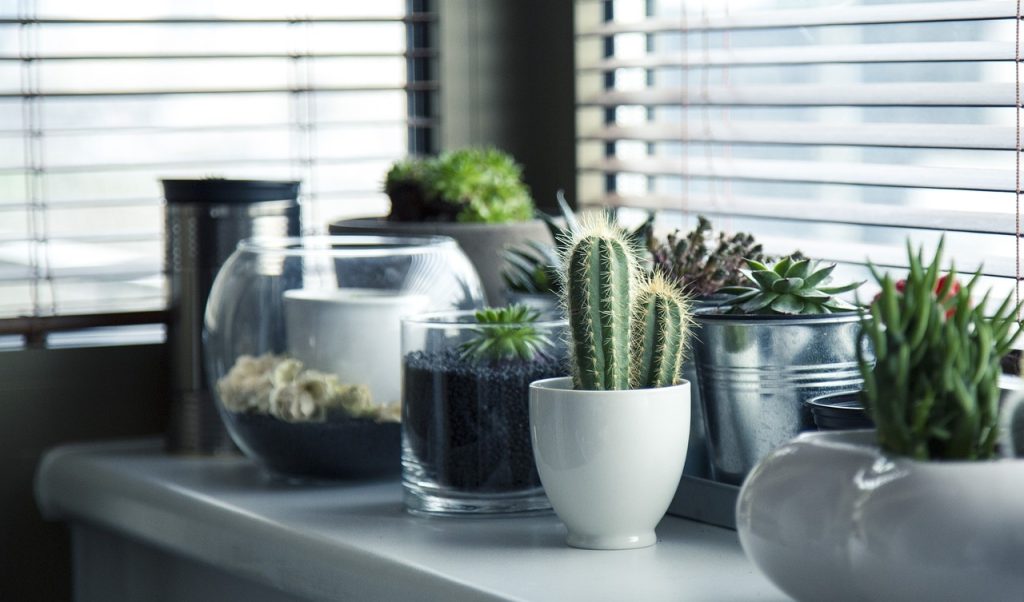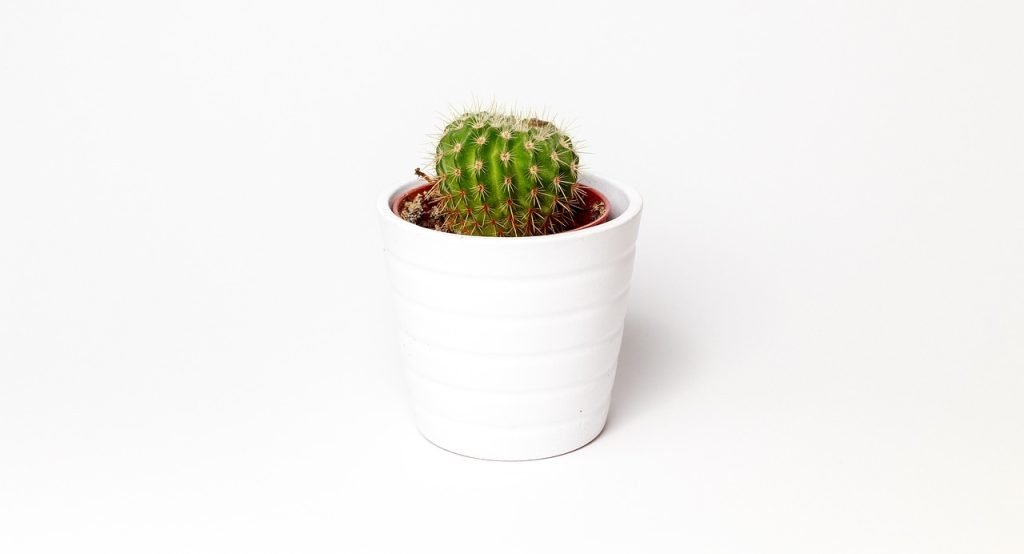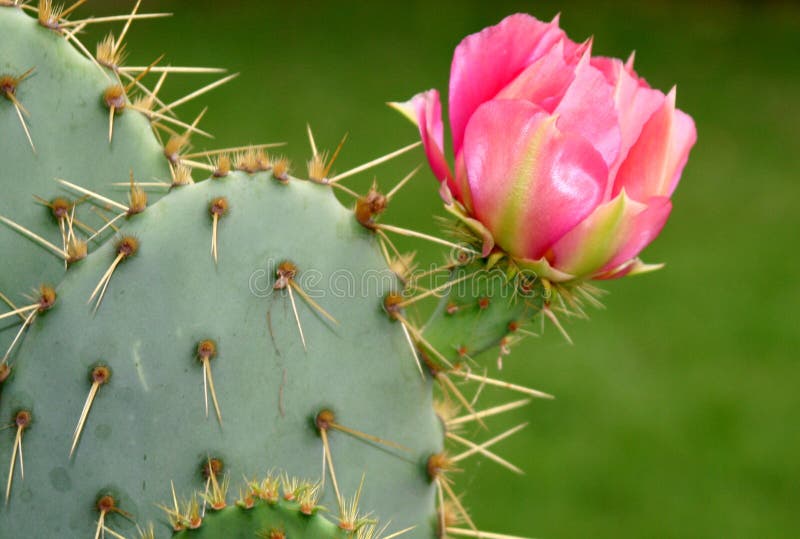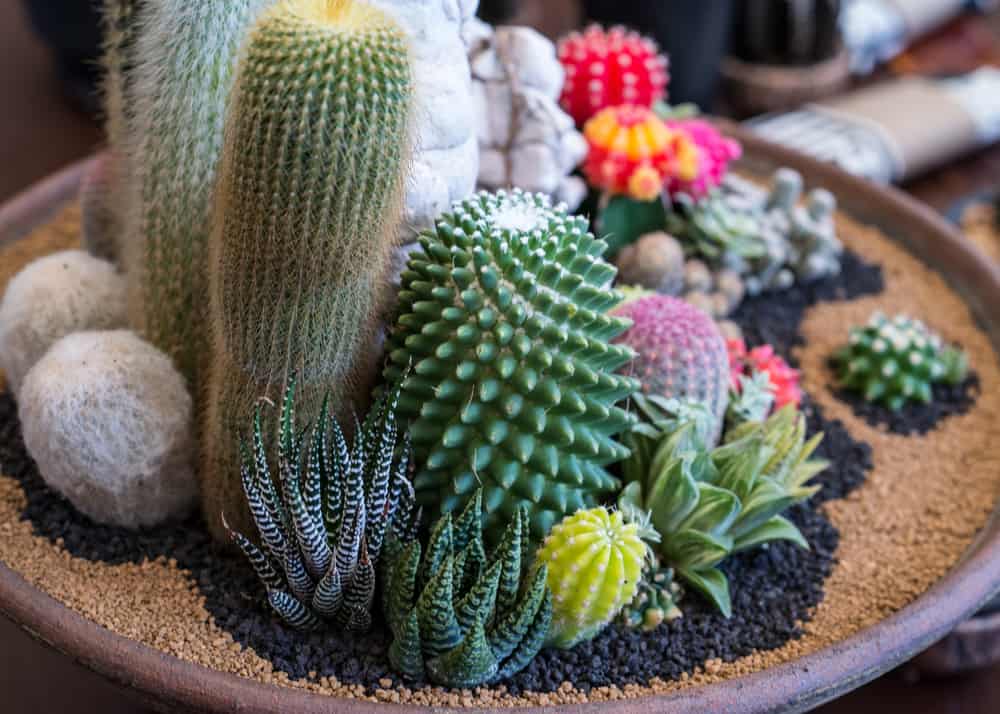HousePlantJoy is supported by our audience. When you purchase through one of our links, we may earn a small affiliate commission. As an Amazon Associate I earn from qualifying purchases. Your cost is not affected.
==================
Repotting Cactus
Cactus is one of the most convenient and the easiest plants to grow indoors. It is a low-maintenance plant and requires little effort to develop. Although behind that prickly and thorny plant, it needs some. Then, slowly repot them, especially that their spines are very delicate. So the question is when and how to repot the cactus?
Potting and repotting cacti can be thorny, but we’ll show you tips on when and how to repot cactus plant and maintain it, just like an expert. Feel free to learn how to repot cacti.
About Cacti
Succulent plants, like the cactus, are a kind of plant. It may store water in its stems, roots, and leaves, for example. The Christmas cactus, a popular holiday plant known for its vibrant blooms, the cactus has water stored to help it develop even if it doesn’t rain for an extended period. You can find cacti growing in desert terrains, greenhouse conservatories, and in direct sunlight from window sills all over the world.
Sentry-like attitudes, spines, and bright blooms are all distinguishing traits of this family of roughly 1600 species. The saguaro cactus finest exemplifies the traditional cactus form of a pillar with bent arms.
Cacti exist in a variety of forms and sizes, as well as different textures and flower colors. Cacti have two groups: desert cacti (and has a coat full of spines) and jungle or rainforest cacti (often without spines, and most are epiphytes). If you’re want to propagate a cactus, you can also consider growing them from Christmas cactus cuttings. You’ll have a trouble-free, fascinating houseplant that will survive for years if you choose the appropriate cactus for the right place.
When do you Repot?
Caring for your cacti species is far more suitable if you fertilize annually, but if you don’t fertilize, repot every two years to replenish soil fertility. The ideal growing season is in January or February, only when the cacti species are growing.
They don’t need to repot often; most species of cacti love small spaces and can stay in their container for years. But when you notice roots sprouting out of the bottom of the pot, it’s necessary to repot the cactus, especially if you haven’t used any rooting hormone. It is overly root bound, as shown by it. The development of roots signals that it has grown out of control and will necessitate repotting. The sight of roots draping around will let you know that it has overextended.
When repotting, use a rooting hormone. This helps the cactus grow new roots in the new pot. The cactus is too big if you see roots circling inside the pot. Repot it and use rooting hormone powder for healthy roots.
How To Repot Cactus
- Tools to use
- Pot size and mix
- Repotting the Cacti
- Aftercare
Tools To Use
-
Soil Scoops
Plastic scoops make excellent repotting shovels, especially when you need to find the right soil for Christmas cactus cuttings. There are a variety of sizes and forms to fit a variety of pots and plants. Although I discovered an amazing stainless steel scoop that we use for adding gravel/rocks for top dressings, they are generally plastic. It’s all in the scoop’s form, which aids in getting under spines and offsets/pups while adding soil.
-
Gloves
It is advisable to use leather gloves while working with cactus. We do not recommend fabric gloves since cactus thorns may easily pierce them. In addition, some cactus cuttings have hooked ends on their spines, which may grasp the cloth and refuse to let go. If most of the cloth surface is covered and the cactus has soft needles, plastic-coated fabric gloves can also be an alternative.
-
Tissue paper or Cloth
Begin from the plant’s base and work your way up. If the spines are peeking through, you can fold the sheets to provide thickness. Wrapping takes some time, but it will help the remainder of the procedure go much more smoothly. It also protects you from spines, the plant from itself, and the tissue paper helps keep pieces of soil from becoming attached to tiny spines while repotting because it covers the plant.
POT SIZE AND MIX
The cacti love cultivating in specialized cacti soil or free-draining soil for optimum quality. Terracotta pots are ideal since they are porous and allow water and air to flow throughout them. Plastic pots retain more moisture, needing less water and assuring that compost will not become excessively moist.
-
Choosing Your Pot Size
When planning to get a succulent, you will note that the plants have labels in specific measurements. If it concerns growing spiny cacti plants, pot size is essential. For most situations, the correct pot will be more or less the same size as the plant and, more significantly, its roots.
The main rule to remember while choosing the correct planter size is to allow for the plant’s natural development as if it were in its native habitat. For example, cactus plants don’t generally require large containers. However, if you pick a small container, the roots will be constrained, leaving no area for the soil. If you prefer a larger container, on the other hand, you will almost certainly overwater the plant. As a result, selecting the proper cactus size is critical.
Choosing the appropriate container size for your cactus plant can be difficult, especially if you are a novice gardener. A container that is either too tiny or too large can influence your plant’s overall health; once you understand how pot size affects cactus plant development, determining the proper size for your plant becomes quite simple.
-
Potting Mix
Cacti, like succulents, require a well-draining potting mix to maintain the water shortage conditions to which they have adapted. As a result, your regular soil mix is out. Instead, get a professional succulent mix made just for your healthy cactus. A standard cactus/succulent mix comprises sand, perlite, and sphagnum peat moss, as well as a tiny quantity of organic components.
Making your concoction is less expensive. If you reside in an arid environment, peat should be added to your potted plants, but be cautious not to let it dry up entirely. In most other locations, including the house interior, one part washed sand, one part soil, and one part gritty amendment such as pebbles or even pot shards is sufficient for the plants.
Potting mix is essential. You should pick the right one because, by the time you detect a deterioration in the health of your cactus and consider repotting it in a cactus-specific planting mix, it may be too late. It is preferable to make the correct decision the first time. Determine the natural habitat of your cactus.
Repotting The Cacti
-
Preparation
The process of transplanting a cactus cutting is influenced by its size and spikiness, which determines the equipment needed. Metal tongs and newspapers, for example, may not be required for transplanting tiny cacti, but more giant cacti may necessitate a complete arsenal of protective equipment.
When working with cactus heavy, we suggest protective gloves, regardless of their size.
-
Removal of Cacti in Old Pot
If required, loosen the dirt around the cactus. For example, cactus pot’s edges using a dull knife or trowel. If necessary, wrap the cactus in many layers of newspaper to make it easier to grasp, or use the metal tongs to handle it. Slowly take the root ball out of the old container with your fingers and set the cactus flat on your work surface.
-
Loosening the Soil and Getting Rid of Old Soil
If required, use a dull knife or a trowel to loosen the dirt around the pot’s edges. To make the cactus simpler to handle, wrap it in many layers of newspaper or use metal tongs. Wiggle the cactus root ball out of the old container and place it flat on your work surface.
-
Inspecting and Trimming of Roots
It’s a good idea to inspect the roots for symptoms of pests or illnesses while they’re exposed. Cut back with pruning shears any dead or infected roots and, if necessary, use a fungicide.
-
Planting the Cactus in the New Pot
Fill the bottom of the new pot halfway with the cactus soil mixture, ensuring the cactus is placed at the same depth as it was in the previous container. Gently insert the replant cactus in the pot with tongs or newspaper and keep it in place while you fill the rest of the container with dirt.
Water the newly transplanted cactus after a few days to allow it to acclimatize to its new surroundings. You may resume your usual watering regimen after a week or so.
AFTERCARE
Cacti require minimal upkeep to flourish; however, they do require enough direct sunlight, warmth, and ventilation to thrive. The majority of spiny cacti thrive on a sunny south or west-facing window sills, where they get enough indirect light and are sheltered from cold. Cacti should be kept at a temperature of about 27°C (81°F) during the day and 13°C (55°F) at night.
After repotting your cactus cuttings, you should give it a 7-10 day rest time. During this time, don’t water your cactus. Furthermore, throughout these 7-10 days, you must prevent water evaporation from the cacti’s stem. Not watering your prickly pears after really is critical since the stem will otherwise dry out.
Take your cactus stem to a cool, dark location and cover it with a white translucent plastic bag to prevent water from evaporating from the stem. If the room becomes too hot, sprinkle your cactus with warm water and cover it again after 4-5 days. Remove the cactus after 7-10 days and plant them in their permanent location. Also, after repotting, water them for the first time.
During the first month or two after repotting, you should see increased growth and possibly flowering.
Conclusion
After reading this article, you might know the right way to repot cactus cuttings and when you should repot your cactus cuttings. In conclusion, repotting your cactus is key to its health. Do it when roots show at the pot’s bottom or circle inside.
Choose a bigger pot and fresh soil. Repotting in late winter or late spring is best, as cacti start growing then. Remember to handle your cactus gently and use gloves for safety. After repotting, wait a week before watering. This helps your cactus collection settle well in its new home. Happy gardening!
FAQs
-
How do you do potting on cactus?
To repot a cactus cuttings, gently remove it from its current pot and inspect the roots for damage or rot. Choose a slightly larger pot with drainage holes and fill it with a well-draining potting mix. Carefully place the cactus into the new pot, fill it with potting mix, and water lightly. Allow the plant to adjust to its new environment before watering again.
-
What is the best soil for cactus mix?
The best soil mix for a healthy cactus is one that is well-draining and low in organic matter. A mix of coarse sand, perlite, and peat moss or coconut coir is a good option. Alternatively, you can use a pre-made cactus or succulent potting mix, which is specifically formulated to provide the proper drainage and aeration that cacti need. Avoid using regular potting soil, as it retains too much moisture and can lead to root rot. Additionally, it’s important to choose a pot with drainage holes to prevent water from accumulating in the soil.
-
What are some other desert plants that can be grown with cactus?
Succulents such as aloe and agave, yucca plants, Joshua trees, desert wildflowers like brittlebush and desert lupine, and palo verde trees are some of the other desert plants that can be grown with cactus, provided they have similar water and light requirements and are adapted to the arid conditions of the desert.
-
What are the types of tall cactus?
Tall cacti, such as the saguaro, organ pipe, cardon, Mexican giant, and Pachycereus pringlei, are all native to desert regions and have adapted to survive in arid environments with limited water and nutrients. The cardon cactus is the tallest cactus in the world, reaching up to 60 feet in height.
-
How to propagate christmas cactus?
To propagate a Christmas cactus, simply snip a healthy segment containing at least three leaf segments, let it callus for a few hours, then plant it in a well-draining potting mix. Keep it in a warm, humid environment, and in a few weeks, it will develop roots, forming a new Christmas cactus plant.

